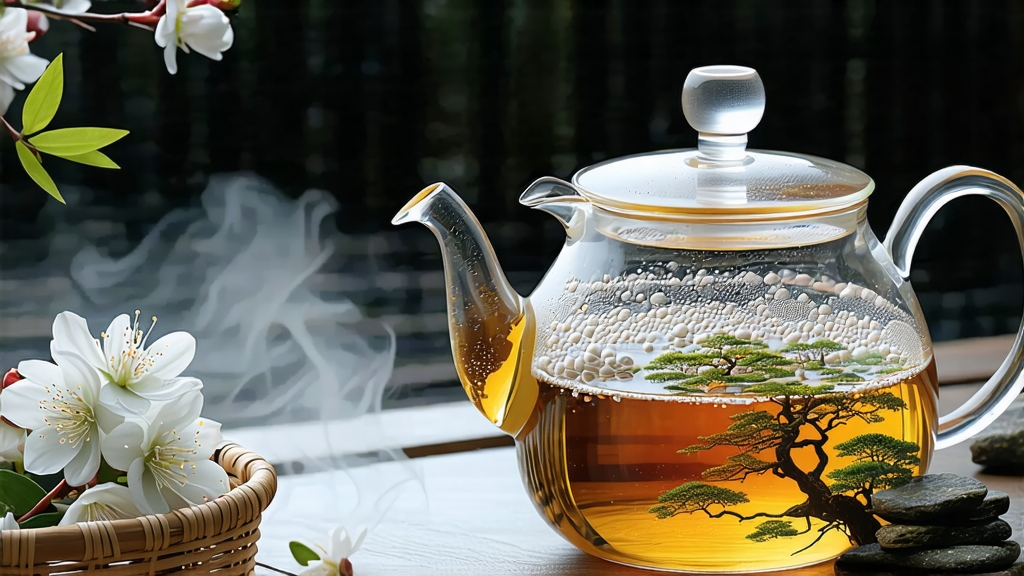
Bai Hao Yin Zhen—literally “White Hair Silver Needle”—is the most aristocratic member of China’s white-tea family. To the uninitiated it may look like a handful of pale, inert twigs, yet in the presence of hot water these down-covered buds uncurl into liquid moonlight, releasing a fragrance that Chinese poets have likened to “the breath of a hidden orchid after rain.” This essay invites the international reader to follow the needle’s luminous trail from Song-dynasty court gardens to the contemporary tea table, exploring the history, micro-terroirs, hand-craft, brewing science, and sensory philosophy that elevate one simple bud into a world-class luxury.
-
Historical whispers: from imperial tribute to minimalism
White tea’s written record first surfaces in the Song Shi, the official history of the Song empire (960-1279), where “white buds from Jian’an” were listed among the emperor’s spring tributes. Yet those cakes of powdered white tea bear little resemblance to today’s loose Silver Needle. The modern form emerged during the Qing Qianlong era (1736-1795) when Fujian tea makers, responding to northern court demand for lighter, unpressed teas, began air-drying only the unopened buds of the Fuding Da Bai cultivar. Because the finished tea is silver-white and straight as a needle, court eunuchs christened it Yin Zhen and sealed it inside lead-lined jars for the 2,000-km journey to Beijing. By the late nineteenth century Fuding ports under treaty-opened Fuzhou exported Silver Needle to Europe, where it was sold in London as “Flowery Pekoe Tips” at prices exceeding first-flush Darjeeling. The 1915 Panama-Pacific International Exhibition awarded it a gold medal, anchoring its global reputation. After 1949 the tea became diplomatic currency: Chairman Mao reportedly presented Ho Chi Minh with 500 g of Silver Needle harvested on the first day of Qingming. Today the bud remains a national gift, yet minimalist processing keeps it closest to the living leaf of any Chinese tea, a quiet rebuttal to industrial acceleration. -
Terroir: why Fuding and Zhenghe taste like different moons
Chinese regulation restricts the name “Bai Hao Yin Zhen” to buds plucked within Fujian’s two core counties—Fuding in the northeast and Zhenghe in the interior. Though only 120 km apart, their micro-climates create divergent style paradigms. Fuding sits on red lateritic soil at 200-600 m elevation, washed by East-China-Sea mists; its tea gardens wake to 74 % average humidity and a 15 °C diurnal range in March. The resulting buds are plump, 2.5–3 cm long, covered in a pearl-white pubescence that reflects light like frost. Infusions yield a pale apricot liquor with melon skin sweetness and a cool, talcum finish. Zhenghe, nested in the Wuyi foothills, has higher iron-rich yellow soil and cooler nights; buds grow shorter, 2–2.3 cm, with a lemon-yellow down. Their cup profile is deeper—steamed rice, dried longan, and a faint ginger snap warmth. Purists speak of “Fuding elegance” versus “Zhenghe depth,” but both must pass the same legal sieve: only the single, unopened bud picked before Qingming (around April 5) qualifies for top-grade Yin Zhen. -
Cultivar code: Da Bai versus the new clones
The traditional bush is Fuding Da Bai (“Big White”), a seed-propagated landrace selected during the Daoguang reign (1821-1850) for its oversized buds that can weigh 0.5 g each. Its polyphenol-to-amino ratio (roughly 3:1) guarantees both silken body and enduring sweetness. Since 1998 the Tea Research Institute has released clonal offspring—Ruan Zhi Da Bai and Hua Cha No. 1—engineered for higher yield and cold tolerance. While these clones pass the provincial sensory panel, connoisseurs note that their trichomes are slightly coarser and their liqueur lacks the “echoing depth” of seed-grown bushes. A compromise now exists: organic gardens interplant mother-tree cuttings with